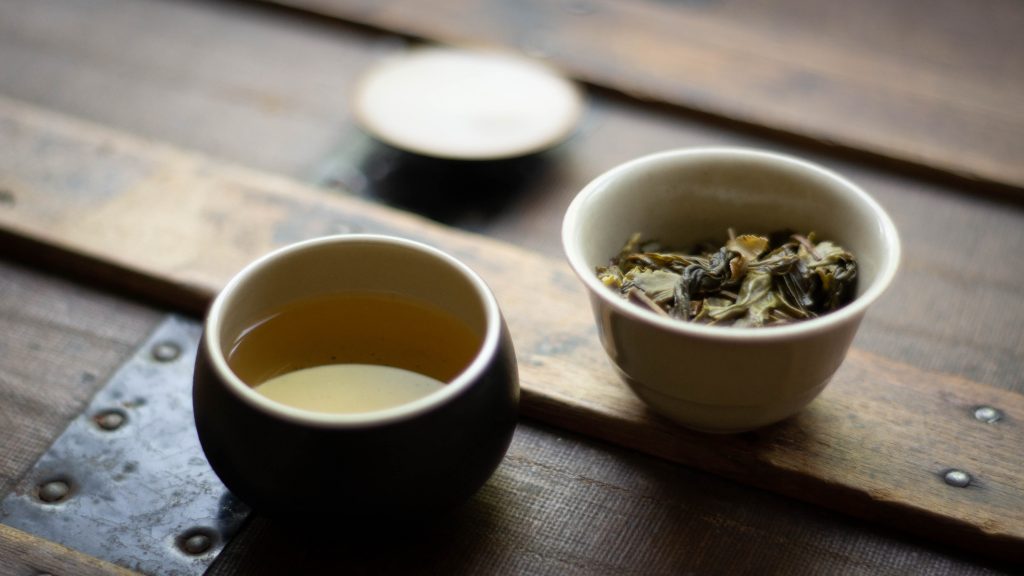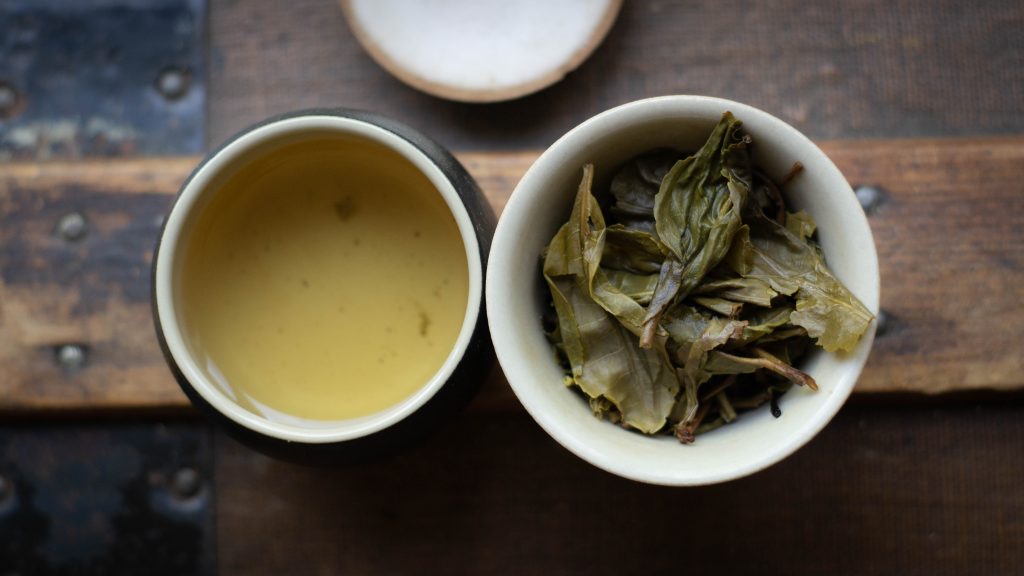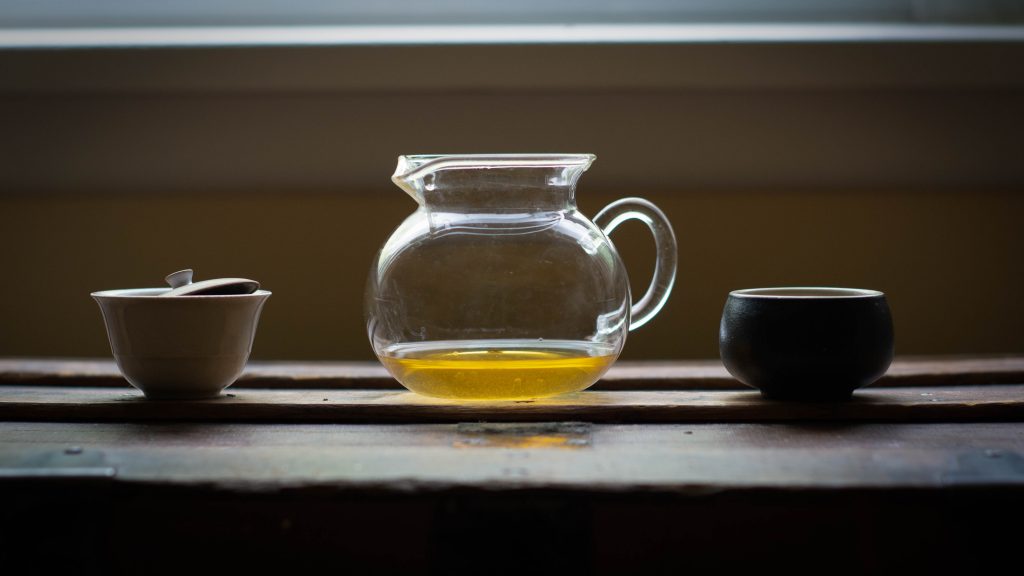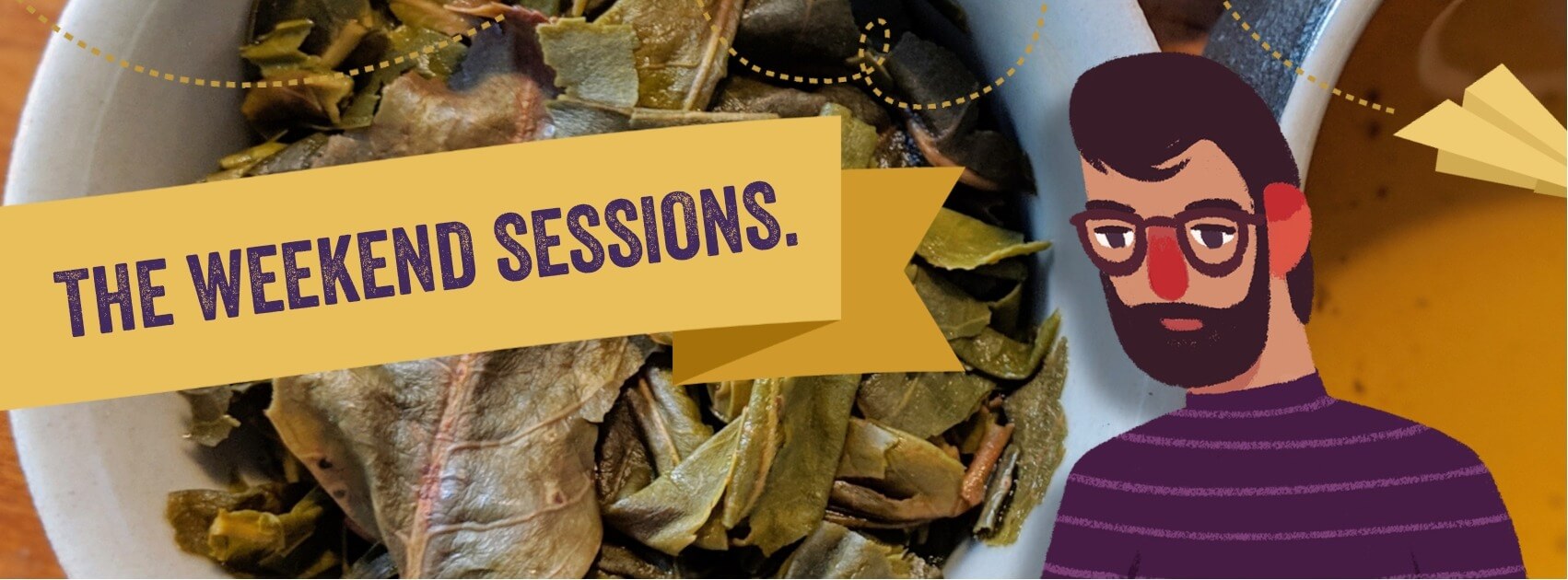
Time for another look at Bitterleaf Teas‘ Pretty, Pretty, Pretty Good raw puerh! If you’re just coming across this for the first time now, I will be posting updated reviews on this tea monthly for the next year. This is my third month/third tasting. Please check out last month’s review here and the previous month here if you are curious to follow along with how this cake progresses.

Breaking the Cake
No surprises here, like most puerhs from Bitterleaf, this cake has a medium compression and breaks apart quite nicely. The dry leaves are prominently woody and earthy in smell and after a quick rinse they transform to a super in-your-face smell with notes of apricot and peaches.
For this session I am using 3.7 grams of tea in my 55ml gaiwan, and 90C water. I gave the leaves one quick rinse then began my session with a five second infusion and increase by five seconds each steeping.

Infusions 1-3
The first sip of infusion one is almost completely tasteless and has nearly no aroma to the liquor. Despite the lack of up front taste, the aftertaste is already present, with a sweet raisin flavour. As the liquor cools I start to get some taste, with a light woodiness and a touch of currants. The raisin flavour moves to the forefront and becomes quite strong during infusion two, and at the top end there is a bright cherry note. For the third infusion no new flavour arrives, but the tea becomes all round more full. With every sip of the third infusion astringency begins to inch in.

Infusions 4-6
Infusions four and five are marked by two things – a crisp peach-y flavour and astringency through the roof. The earlier notes of raisin and cherry are still there if you look for them, but it’s hard to focus when your mouth is being turned into the Sahara. Then, just as quickly as it came on, the astringency completely disappears during the sixth infusion. With it also go the brighter notes as the tea returns to it’s darker woody base with some faint herbal, medicinal tones.

Infusions 7-11
Pretty, Pretty, Pretty Good’s flavour peaked during at the sixth infusion and slowly declines until the eleventh. Not much changes during this time and it fades out on the notes from the sixth steeping – woody taste with a light medicinal, herbacious flavour.
Final Thoughts
My third go around with this tea seems to not bring too many new things to the table. It seems to be a healthy mix of what I experienced in both previous tastings. One thing that seems to be lacking was the full body from those previous tastings. While not lacking in this department, my previous tastings noted that this was an incredibly thick tea, where I just didn’t find it to be too noteworthy this time around.

